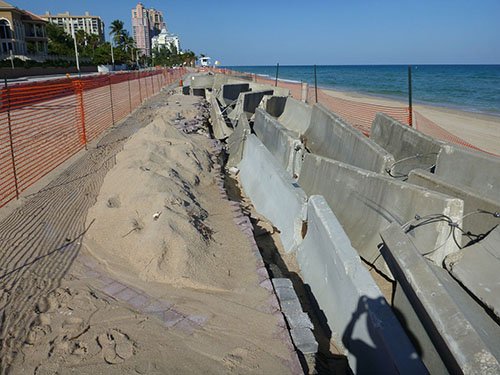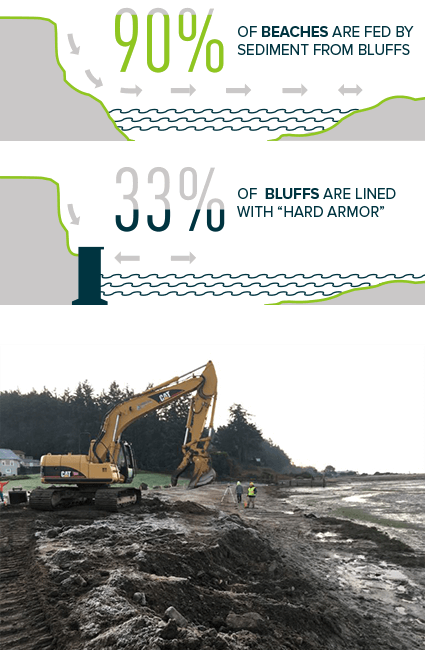How Shore Protect Team can Save You Time, Stress, and Money.
Table of ContentsThe Definitive Guide to Shore Protect TeamThe Facts About Shore Protect Team RevealedThe Single Strategy To Use For Shore Protect TeamThe Buzz on Shore Protect TeamWhat Does Shore Protect Team Do?Not known Details About Shore Protect Team The Facts About Shore Protect Team Revealed
Reduction in home worth: As the location tourist is impacted by erosion, so then is the economy. Purchasers are less likely to look for a beach house that might be damaged anytime by the approaching flooding and disintegration emergency. Subsequently, residential or commercial property value can drop tremendously and affect the entire region.Whether a coastline is just tiny and crowded or has to close totally for the safety and security of the environment and nearby residential or commercial properties, this significantly influences tourist. Subsequently, neighborhood economies are affected (https://comicvine.gamespot.com/profile/shrprtcttm/). Risk of injury: The boosted danger of flooding and architectural failings causes an increased threat of injury to neighboring travelers and community members

Shoreline stabilization is directly related to their job. Beachfront hotels: Because coastline disintegration effects tourist, it impacts the success of waterfront resorts.
The smart Trick of Shore Protect Team That Nobody is Discussing
This eventually leads to closures and abandoned beachfront residential or commercial properties. Coastal commercial services: No tourists suggests no service. For those companies dealing with locals, their home is at threat of damages from erosion and flooding. Coastal state parks: State parks that exist along shorelines are at risk of damages. Not only to the manufactured structures and buildings on website, yet additionally to the all-natural communities that exist within.
Soft stabilization is a much far better option for the environment and more sustainable overall. Tough stablizing uses man-made structures as security to regulate disintegration. Usually, these structures are set up at appropriate angles or alongside quit sand activity and reduce the force of waves. A lot of types of hard stabilization like seawalls and sheet steel are not optimal for coastline stablizing.
Shore Protect Team Fundamentals Explained
There's additionally inadequate proof of their effectiveness depending on the kind of coastline and regional problems. Hard stablizing methods have a tendency to be much more tough to set up and don't match the natural visual, standing out like a sore thumb and damaging regional ecosystems in many situations. Coastline sustenance is the procedure of adding lost sand and sediment back to coastlines after erosion has actually occurred.
TrapBags help in the process of coastline nutrition by safeguarding all-natural ecological communities and enabling plants to grow. While this procedure can be pricey and is not long-term, the pros often tend to outweigh the cons. TrapBag barriers offer many buildings that make them ideal for seaside and riverbank disintegration protection. They're: Eco-friendly: You can make use of native soil both to border and to fill the TrapBags.

Some Known Questions About Shore Protect Team.
They can additionally be mounted without any type of heavy machinery. Affordable: TrapBags are excellent for both little and huge areas of coastline.
Integrated with a high construction cost, this has led to boosting usage of various other soft engineering seaside management alternatives such as coastline replenishment. Seawalls are constructed from numerous materials, a lot of typically strengthened concrete, stones, steel, or gabions. Various other feasible building materials include plastic, timber, aluminum, fiberglass composite, and naturally degradable sandbags made of jute and coir. The suitable seawall design depends on location-specific elements, consisting of bordering disintegration procedures. There are 3 main types of seawalls: upright, bent, tipped, and mounds (see table listed below).
All-natural obstacles, such as coral reefs and mangrove woodlands, protect against the spread of tidal waves and the circulation of seaside waters and mitigated the flood and surge of water. A cost-benefit technique is an effective method to determine whether a seawall is suitable and whether the benefits are worth the cost.
Fascination About Shore Protect Team
A seawall is a fixed function which can clash with the dynamic nature of the shore and hamper the exchange of sediment in between land and sea. Advantages and downsides of seawalls according to Short (1999) Advantages Negative aspects Long term solution in comparison to soft coastline nutrition (https://www.blurb.com/user/shrprtcttm?profile_preview=true).

This can create beaches to dissipate, making them pointless for beach goers. Usually, seawalls can be a successful method to regulate seaside erosion, however just if they are constructed well and out of materials that can withstand the force of continuous wave energy. Some understanding is needed of the seaside procedures and morphodynamics particular to the seawall area.
The smart Trick of Shore Protect Team That Nobody is Discussing
Combined with a high construction price, this has actually caused enhancing use various other soft engineering seaside administration choices such as coastline replenishment. Seawalls are created from different materials, most generally enhanced concrete, stones, steel, or gabions. Other feasible building materials consist of vinyl, timber, aluminum, fiberglass composite, and eco-friendly sandbags made from jute and coir. The ideal seawall style relies on location-specific facets, including bordering erosion procedures. There are three major types of seawalls: upright, curved, tipped, and mounds (see table listed below). A report released by the United Nations Atmosphere Program (UNEP) suggests that the tidal wave of 26 December 2004 created much less damages in the locations where natural barriers were existing, such as mangroves, coral reefs or seaside vegetation.
Natural obstacles, such as coral reefs and mangrove woodlands, prevent the spread of tidal waves and the flow of seaside waters and reduced the flood and rise of water. A cost-benefit approach is an efficient means to figure out whether a seawall is appropriate and whether the benefits deserve the expenditure.
Excitement About Shore Protect Team
A seawall is a fixed function which can conflict with the vibrant nature of the coastline and hinder the exchange of sediment in between land and sea. Benefits and drawbacks of seawalls according to Short (1999) Advantages Negative aspects Lengthy term option in comparison to soft coastline sustenance.

This can trigger coastlines to dissipate, providing them worthless for coastline goers. Usually, seawalls can be a successful means to manage seaside disintegration, yet only if they are constructed well and out of materials that can hold up against the force of ongoing wave energy.